Nikon CoolPix P7000 Review
Nikon CoolPix P7000
Is Nikon's new semi-pro compact a match for the Canon G12?
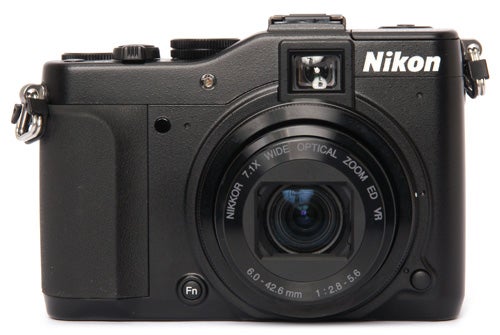
Verdict
Pros
- Excellent autofocus
- Superb lens
- Good build quality
Cons
- Disappointing video recording mode
- Sluggish
Key Specifications
- Review Price: £355.00
- 1/1.7-inch 10-megapixel CCD sensor
- 7.1x f/2.8-5.6 Nikkor zoom lens
- 7.5cm LCD monitor
- 114.2 x 77 x 44.8mm
- 360g
The yardstick against which all other semi-pro compacts are measured is the Canon PowerShot G series, which is celebrating its tenth birthday this year. We’ve yet to review the latest example, the G12, but we took a look at the G11 this time last year and were suitably impressed. A more recent contender is Panasonic’s Lumix LX series, of which the latest example is the excellent LX5, which we saw a few months ago. More recent still is Samsung’s first foray into this area of the market, the impressive EX1.
One manufacturer that used to be well-represented at the top end of the compact market is Nikon, but it’s been over two years since the launch of the P6000, and even that camera was no match for its contemporaries the G10 or LX3. Now however Nikon has a new contender in the shape of the CoolPix P7000. I use the word “shape” advisedly here, because some commentators have pointed out that the P7000 bears a more than passing resemblance to its Canon rival.
However while there are obvious similarities in the size, shape and control layout it’s hardly fair to accuse Nikon of copying, since the design of both models owes a lot to the shape of old 35mm rangefinder cameras, the owners of which are very much the target audience for this kind of camera. 
Nikon certainly hasn’t skimped on features for the P7000, setting out to match or beat its main rival. It is equipped with a large 1/1.7-inch 10-megapixel CCD sensor (the same size and resolution as the G12), a 7.1x f/2.8-5.6 Nikkor zoom lens, equivalent to 28-200mm (the G12 has a 5x zoom f/2.8-4.5, equivalent to 28-140mm), and a 7.5cm LCD monitor with a resolution of 921,000 dots (the G12 has a 7cm 461k screen, but it is articulated).
It also offers an optical viewfinder, a full range of manual exposure controls, optical image stabilisation, a pop-up flash and 720p HD video recording. The P7000 is also competing on price of course. The G12 is currently available for around £370, while the Panasonic LX5 is slightly cheaper at around £360. Nikon has picked its price point with care, and the P7000 is currently available for around £350. The only flaw in this cunning plan is the Samsung EX1, which can be yours for around £315.
Top-end cameras such as the P7000 are intended to see a lot of heavy use, and the Nikon is designed accordingly. The body shell is very solidly made, although surprisingly it is of a half-metal, half-plastic construction, presumably to save weight. The battery/card hatch has a sturdy metal hinge, and the tripod bush is also metal. The controls are solidly mounted, very clearly labelled, and operate with just the right amount of physical resistance. The P7000 certainly feels a lot more substantial in the hand that the P6000, an impression borne out by its physical dimensions. It measures 114.2 x 77 x 44.8mm and weighs approximately 360g including battery and card. For comparison, the Canon G12 measures 112.1 x 76.2 x 48.3mm and weighs 401g.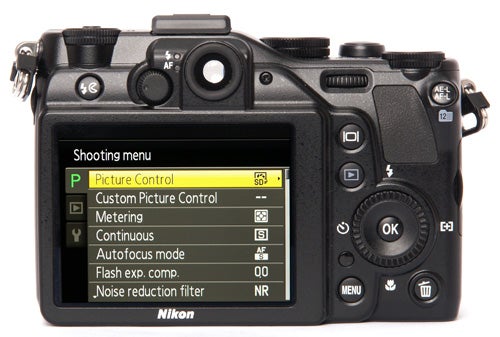
The top and rear panels of the camera’s body are awash with buttons and dials, certainly enough to discourage the casual user. For more experienced users though it provides a comprehensive interface offering a good range of creative control. Main shooting modes are selected via the middle of the three dials on the top panel, and include full auto, program auto, aperture and shutter priority and full manual exposure, as well as a scene mode with 17 scene programs, and three user-defined settings. The right-hand dial controls exposure compensation, while the left dial is used to adjust other settings, including ISO, white balance, image quality, auto-bracketing and the My Menu option. This is somewhat reminiscent of the control interface of the Sony Alpha A100.
Exposure adjustment in manual mode is via a thumbwheel and the rotating bezel around the D-pad. Both controls are responsive and easy to use, and exposure adjustment is accompanied by a nice clear display on the monitor. Aperture values from f/2.8 to f/8 are available, as well as shutter speeds from eight seconds to 1/4000th of a second.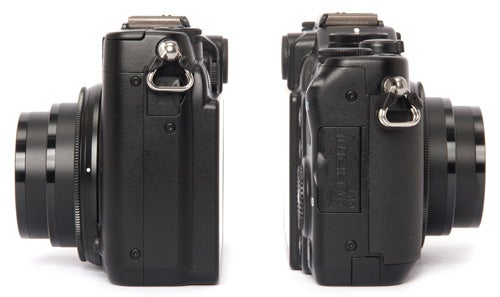
The P7000 offers a good range of tone and appearance adjustments via the picture control menu, which can be accessed via the main menu or via the top left dial. The are four pre-sets, which can be individually adjusted for sharpness, contrast and saturation by three steps in either direction. Noise reduction can also be set to high or low, but this affects all pre-sets. Other creative options include matrix, spot, focus spot or centre-weighting metering. The P7000 has a 256-segment multi-zone lightmeter,
The video recording mode is arguably a little disappointing, but then none of the top-end cameras are really video specialists. The P7000 can shoot at a resolution of 1280 x 720 pixels at 30fps with mono audio, and the optical zoom can be used while recording. The sound and picture quality are quite good, but not really up to the standard of the Panasonic LX5.
The P7000’s overall performance is somewhat mixed. In actual operation the camera feels sluggish. There is a delay when menus are activated, and a longer delay afterwards to go back the shooting mode. It can start up and take a picture in a little more than three seconds, which is possibly a bit on the slow side for a £350 camera. In single-shot JPEG Fine mode it has a shot-to-shot time of approximately 2.2 seconds, which is about the same as the Canon G11, but slower than the LX5 or the EX1. In Raw + JPEG mode however it is much slower, with a shot-to-shot time of a little over six seconds. In continuous shooting mode it can manage approximately 1.5fps, indefinitely in JPEG mode but only for five shots in Raw + JPEG, with a lot of processing time afterwards.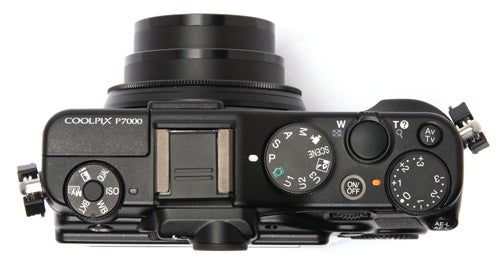
The P7000’s autofocus system is excellent. It has a nine-zone multi-AF option, as well as as two different centre focus options, and face detection. Manual focus is also available. The AF is very quick and accurate, and also woks well in low light. There is a very bright AF assist lamp with a range of several metres, so it can focus in complete darkness.
The raison-d’etre of a high-end compact is image quality. These cameras are often bought by DLSR owners looking for a lighter alternative, but without giving away too much in terms of resolution and sharpness. The P7000 certainly delivers the goods, helped by its superb lens. The 7x zoom Nikkor provides excellent corner-to-corner sharpness with minimal wide-angle distortion and no chromatic aberration. The level of fine detail is very impressive, producing low-compression files of over 4MB. This is certainly on a par with other similar cameras, although we’ll have to wait and see how it compares to the G12.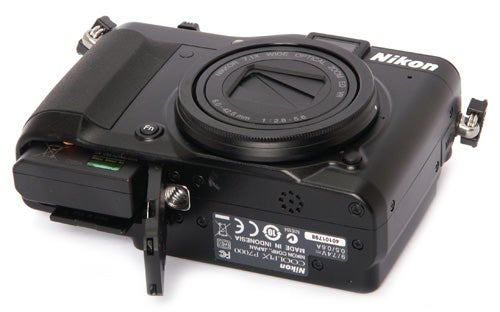
Exposure and colour rendition are very good, and dynamic range is also better than average. Image noise is very well handled, producing clear and reasonably well-detailed pictures at 1600 ISO, and even the 3200 ISO normal maximum produces usable images. ISO can be extended further to 6400, but here the results are not so good.
”’Verdict”’
With the CoolPix P7000 Nikon returns to the very top end of the compact camera market. It’s an impressive camera, with good build quality, a wide range of features and a lot of creative versatility. Performance could be a little better, but there’s nothing wrong with the results. It is a viable and slightly cheaper alternative to the G12 and LX5.
”’Personal note”’
After nearly seven years and over six hundred reviews and features, this will be my final appearance on TrustedReviews, as I’m moving on to new projects and challenges next year. It’s been my great pleasure to entertain and hopefully inform you, and I hope you’ve had as much fun reading my reviews as I’ve had writing them. Keep enjoying your photography, and please be nice to whoever takes over as camera reviewer. Goodbye!
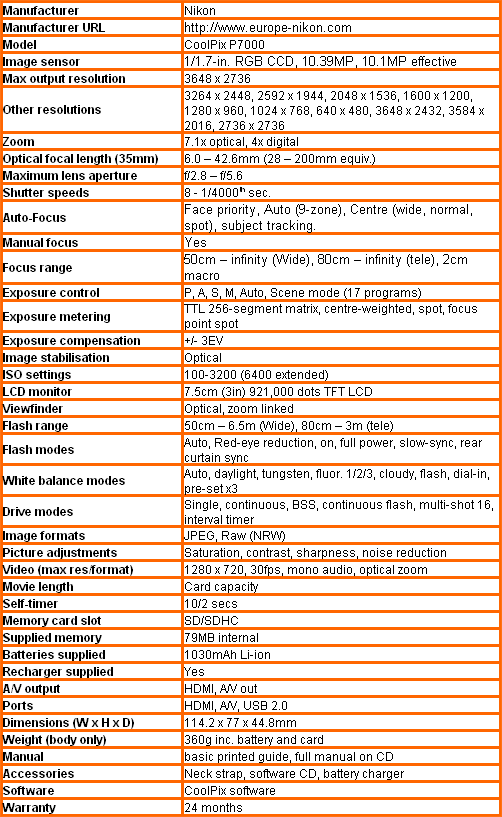
”Over the next few pages we show a range of test shots. On this page the full size image at the minimum and maximum ISO settings have been reduced to let you see the full image, and a series of full resolution crops have taken from original images at a range of ISO settings to show the overall image quality. These pictures were taken indoors using tungsten photoflood lighting. ”
—-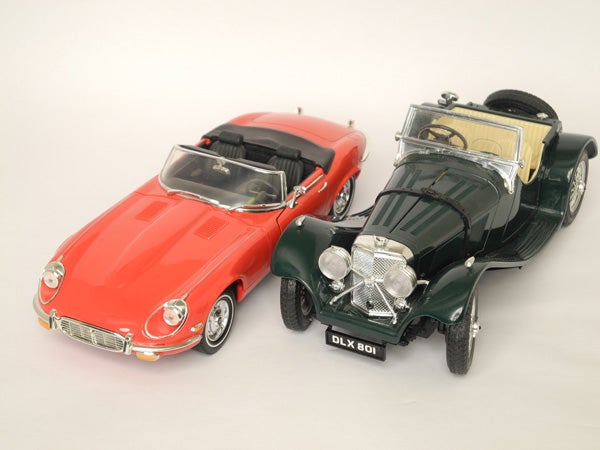
This is the full frame at 100 ISO.
—-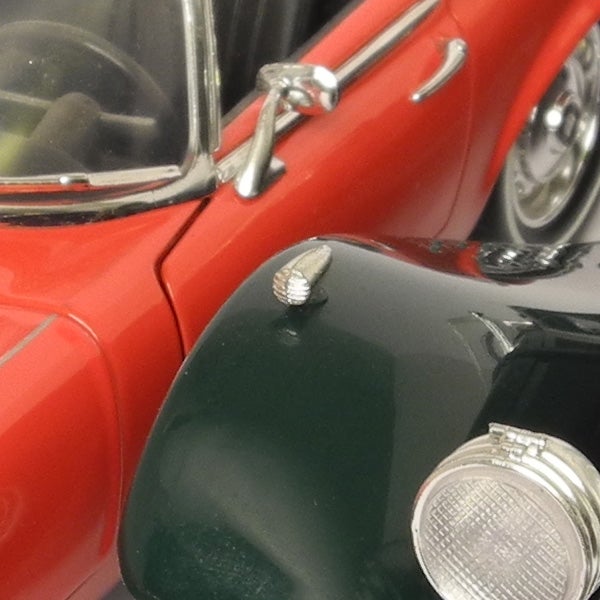
Image quality at 100 ISO is pretty much perfect.
—-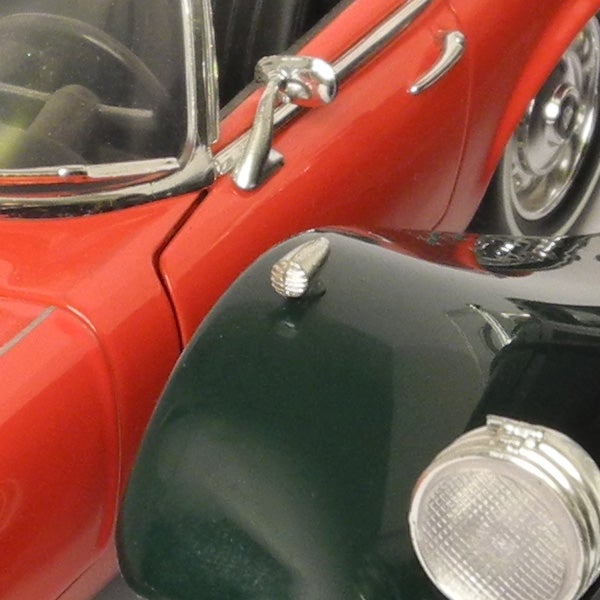
No problems to report at 200 ISO.
—-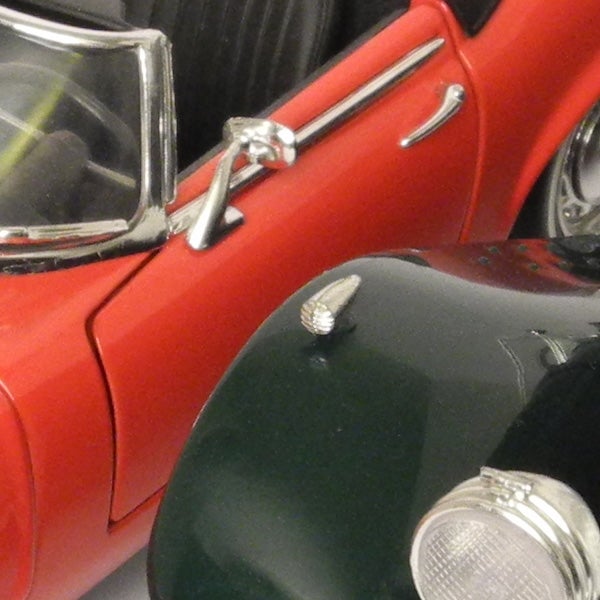
400 ISO and still no noise.
—-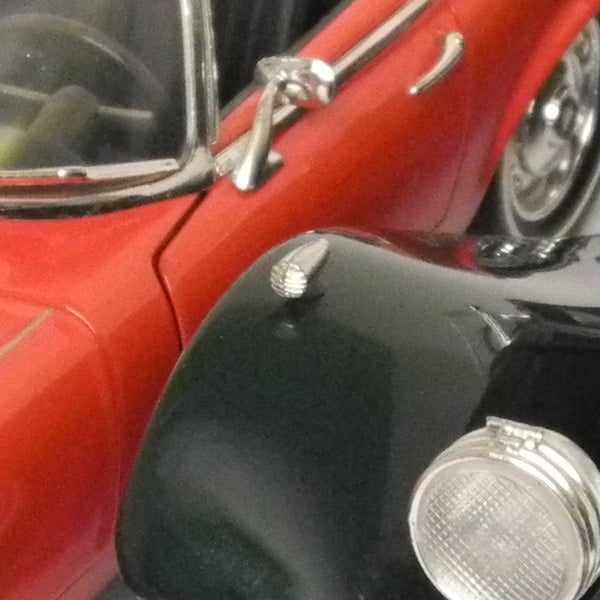
Some noise is creeping in at 800 ISO.
—-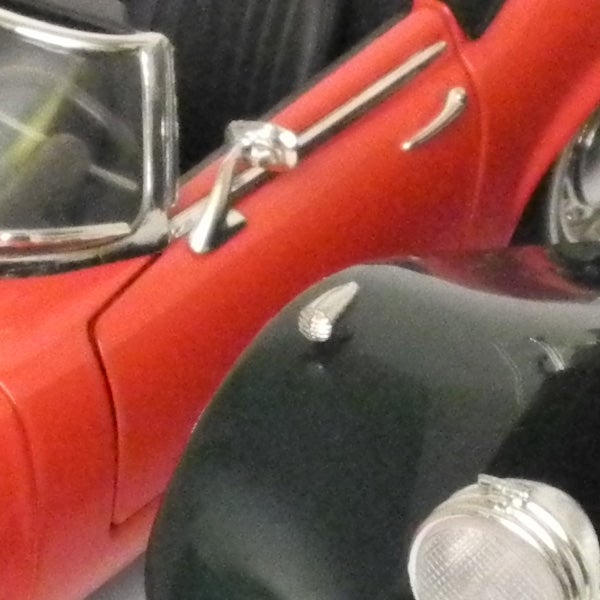
Detail has been lost at 1600 ISO, but the results are still quite printable.
—-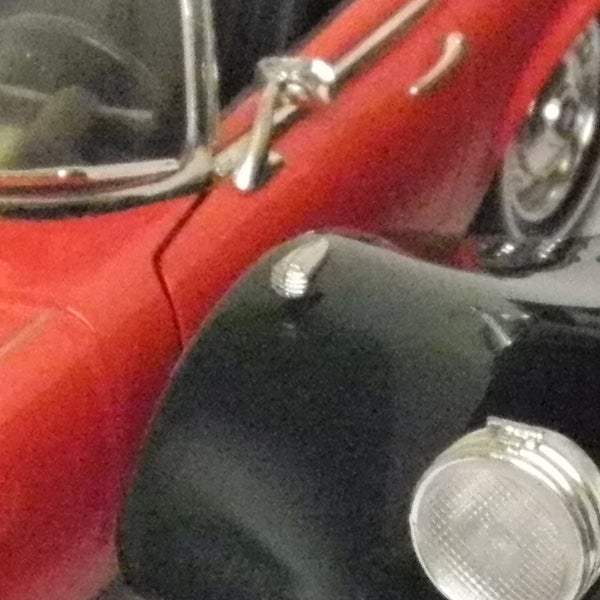
3200 ISO is getting a bit noisy, but the colour is still vry good.
—-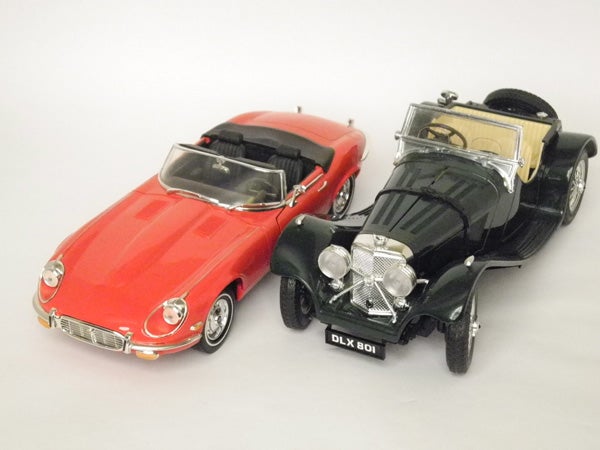
This is the full frame at 3200 ISO.
—-
”A range of general test shots are shown over the next two pages. In some cases, the full size image has been reduced for bandwidth purposes, and a crop taken from the original full resolution image has been placed below it to show the overall image quality. Some other pictures may be clicked to view the original full-size image. ”
—-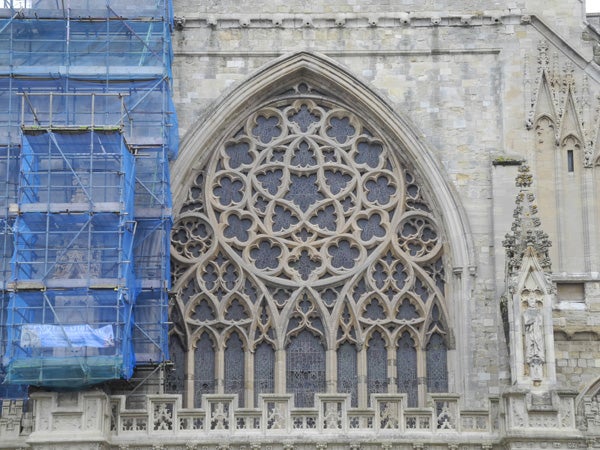
Here’s the usual detail test shot of the West Window of Exeter Cathedral, for you to compare with other cameras. See below for a full res crop, or click to see the whole picture. File size 4.0MB.
—-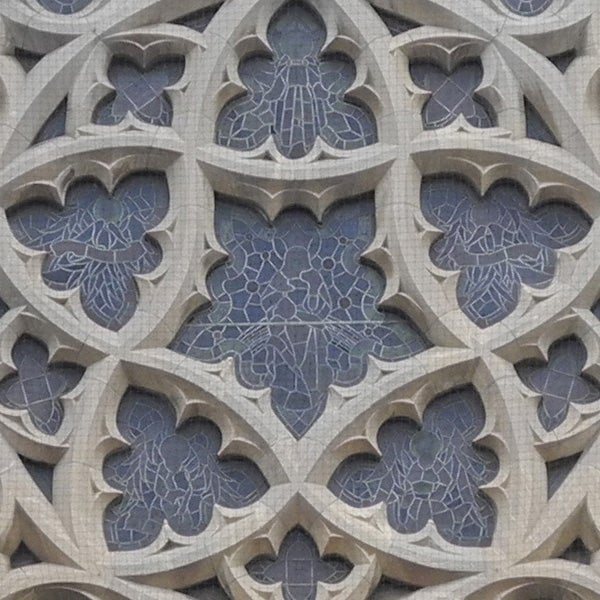
Even in reltively poor light the image is very sharp and detailed.
—-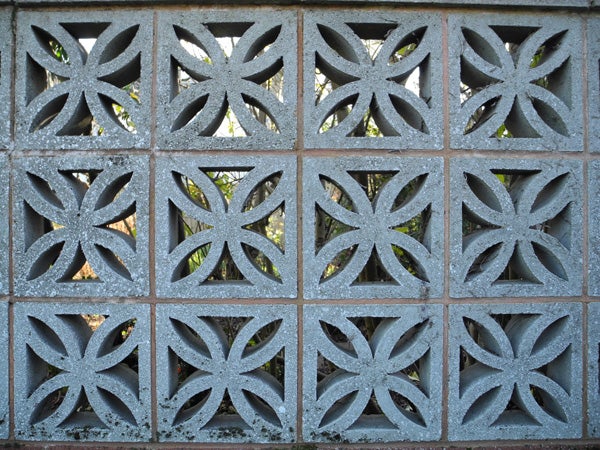
The excellent Nikkor lens produces almost no barrel distortion.
—-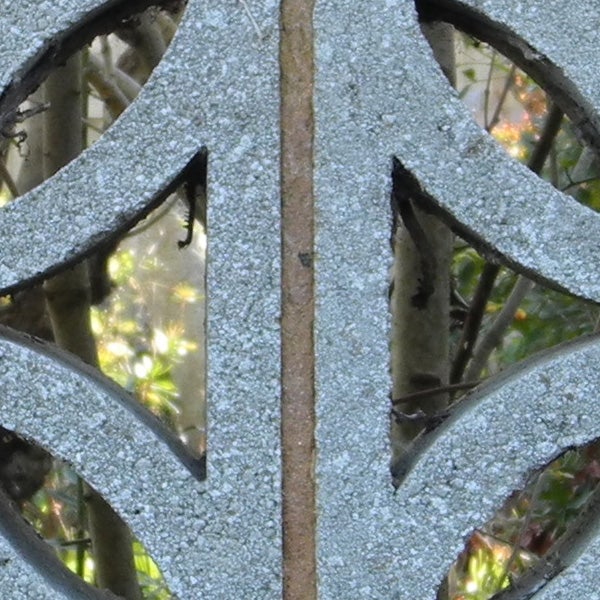
Centre sharpness is excellent.
—-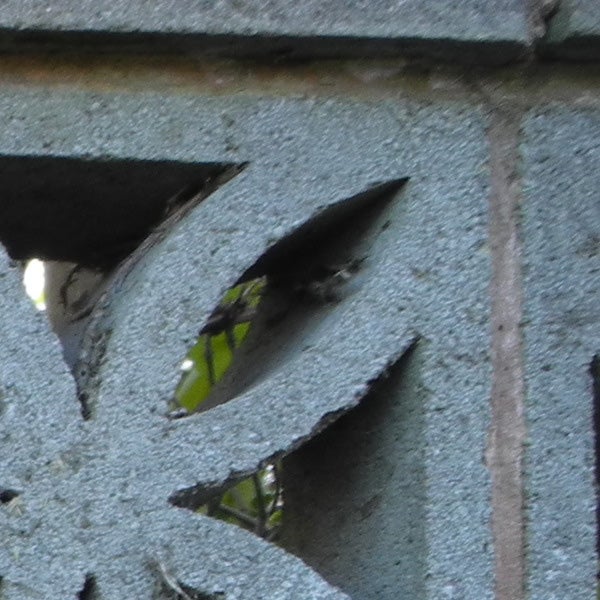
Corner sharpness is also very good, with no chromatic aberration.
—-
”Here are some general test shots to help evaluate the camera’s overall image quality, including dynamic range, colour rendition and the zoom range of the lens. Some pictures may be clicked to download the full size original image. ”
—-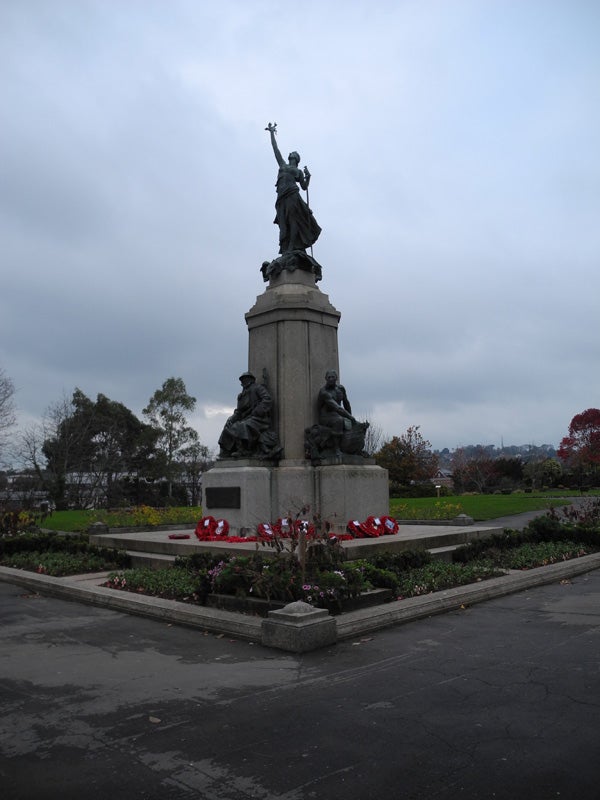
The wide angle end is equivalent to 28mm.
—-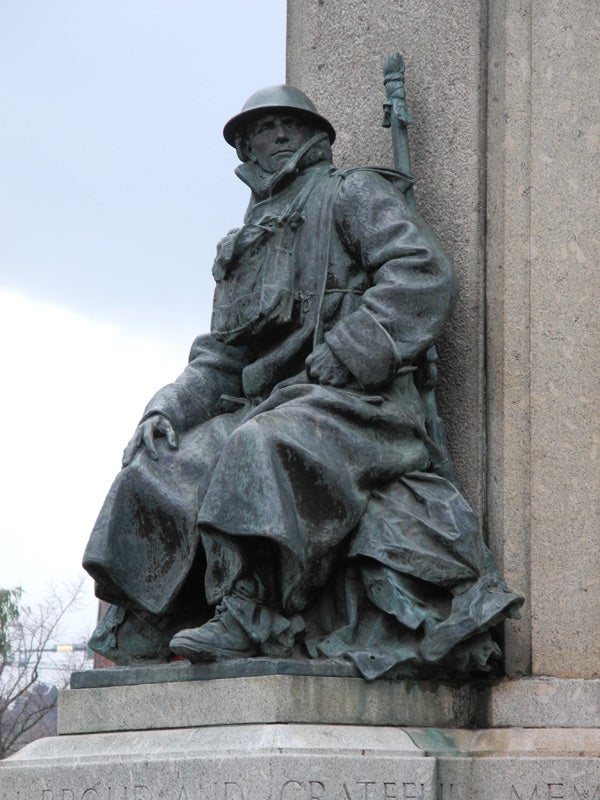
The telephoto end is equivalent to 200mm.
—-
Colour reproduction is supernly lifelike.
—-
Trusted Score
Score in detail
-
Value 9
-
Image Quality 9
-
Build Quality 9
Features
| Camera type | Digital Compact, Digital SLR |
| Megapixels (Megapixel) | 10.1 Megapixel |
| Optical Zoom (Times) | 7x |
| Image Sensor | 1.1/7-inch, RGB CCD, 10.39MP, 10.1MP effective |
| Optical focal length | 6.0-42.6mm (28-200mm equiv) |
| Shutter speed | 8-1/4000 sec |
| Auto focus | Face Priority, Auto (9-zone), Centre (wide, normal, spot), subject tracking |
| Manual focus | Yes |
| Max output resolution | 3648x2736 |
| Other resolutions | 3264x2448, 2592x1944, 2048x1536, 1600x1200, 1280x960, 1024x768, 640x480, 3648x2432m 3584x2016, 2736x2736 |
| Focus range | 50cm to infinity (wide), 80cm to infinity (tele), 2cm macro |
| Exposure control | P, A, S, M, Auto, Scene mode (17 programs) |
| Exposure metering | TTL 256-segment matrix, centre-weighted, spot, focus point spot |
| Exposure compensation | +/- 3EV |
| Image Stabilisation | Optical |
| ISO settings | 100-3200 (6400 extended) |
| LCD Monitor | 3-inch, 921k dot resolution TFT LCD |
| Viewfinder | Optical |
| Flash range | 50cm to 6.5m (wide), 80cm to 3m (tele) |
| Flash modes | Auto, Red eye reduction, on, full power, slow-sync, rear curtain sync |
| White balance modes | Auto, daylight, cloudy, tungsten, fluorescent, full power, slow-sync, rear curtain sync |
| Drive modes | Single, continuous, BSS, continuous flash, multi-shot 16, interval timer |
| Image formats | Rawm JPEG |
| Picture adjustments | Saturation, contrast, sharpness, noise reduction |
| Video (max res/format) | 1280x720 in 30fps, mono audio, optical zoom |
| Movie length | Card capacity |
| Self timer | 10/2 seca |
| Memory card slot | SD/SDHC |
| Supplied memory | 79MB internal |
| Batteries supplied | 1030mAh Li-ion |
| Charger supplied | Yes |
| A/V output | HDMI, AV Out |
| Charging/Computer Connection | USB 2.0 |
| HDMI | Yes |
| AV Out | Yes |
| Manual | Basic printed guide, full manual on CD |
Physical Specifications
| Dimensions Width (Millimeter) | 114.2mm |
| Depth (Millimeter) | 77mm |
| Weight (body only) (Kilogram) | 360g including battery and cardkg |

